Bringing a new puppy into a household with an older dog can be an exciting time, but it can also be a source of stress and anxiety for both dogs and their owners.
The process of getting the older dog to accept the new puppy can vary greatly depending on the individual personalities and dynamics of the dogs involved. However, with patience, consistency, and proper guidance, it is possible to successfully integrate a new puppy into a household with an older dog.
We will also address the common question of how to get my older dog to accept the new puppy, as every dog is unique and may require more or less time to adjust. By understanding the dynamics between older and younger dogs and implementing effective techniques, you can ensure a smooth and harmonious relationship between your furry companions.
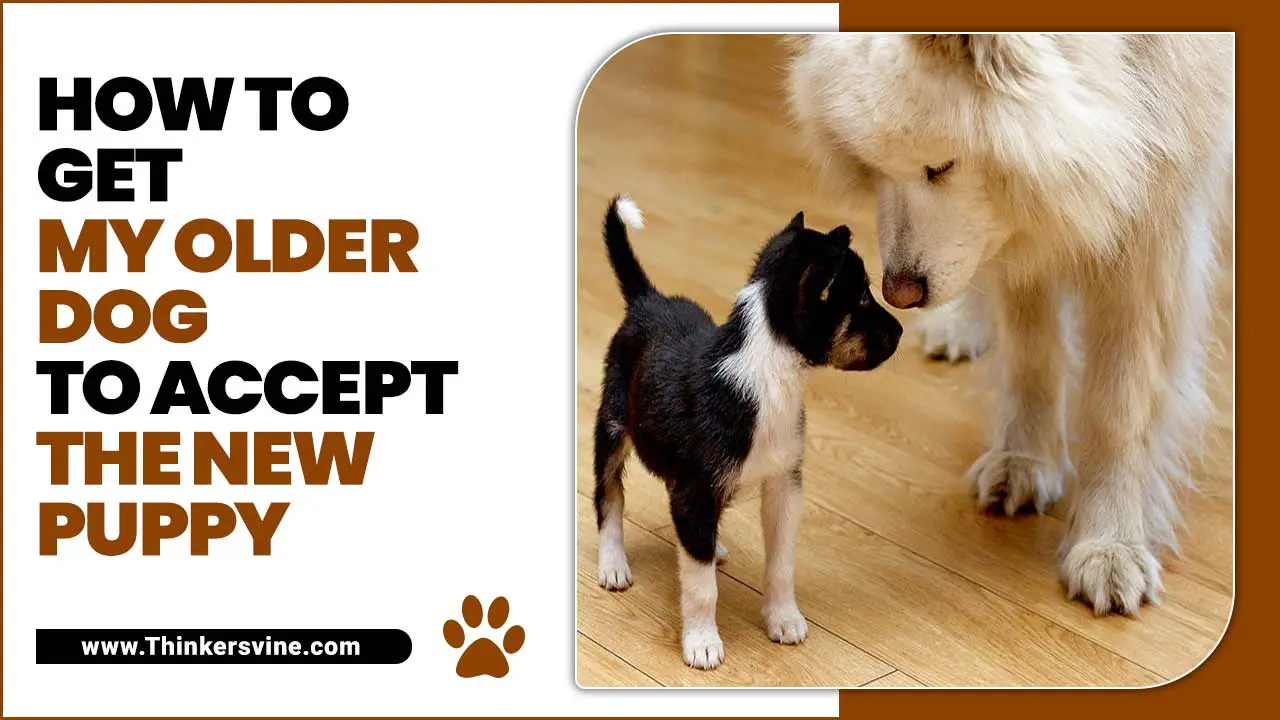
Ways On How To Get My Older Dog To Accept The New Puppy
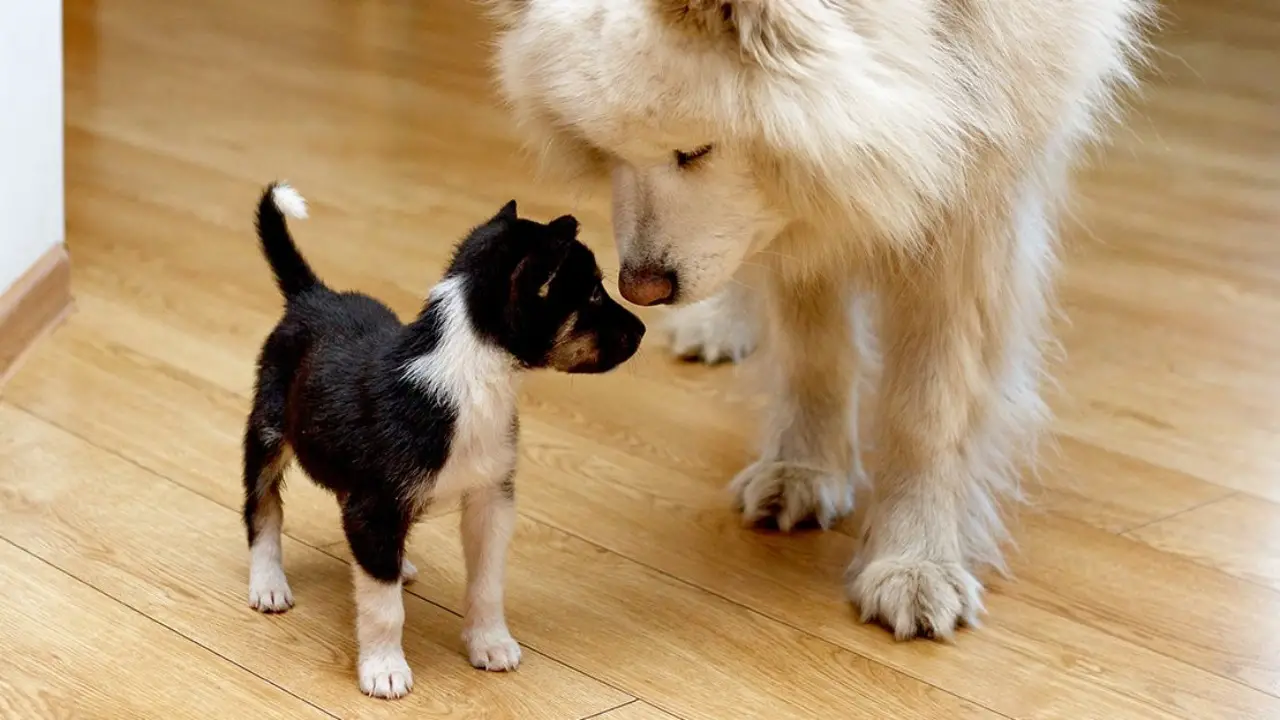
Almost every pet owner worries about their older dog’s interaction when bringing a new pet home. We know you have the same question: How do my older dogs accept the new puppy? Now, here are a few things that you need to follow to make your older dog accept your new puppy:
1.Introduce Your Dogs To Ground Or Open Place
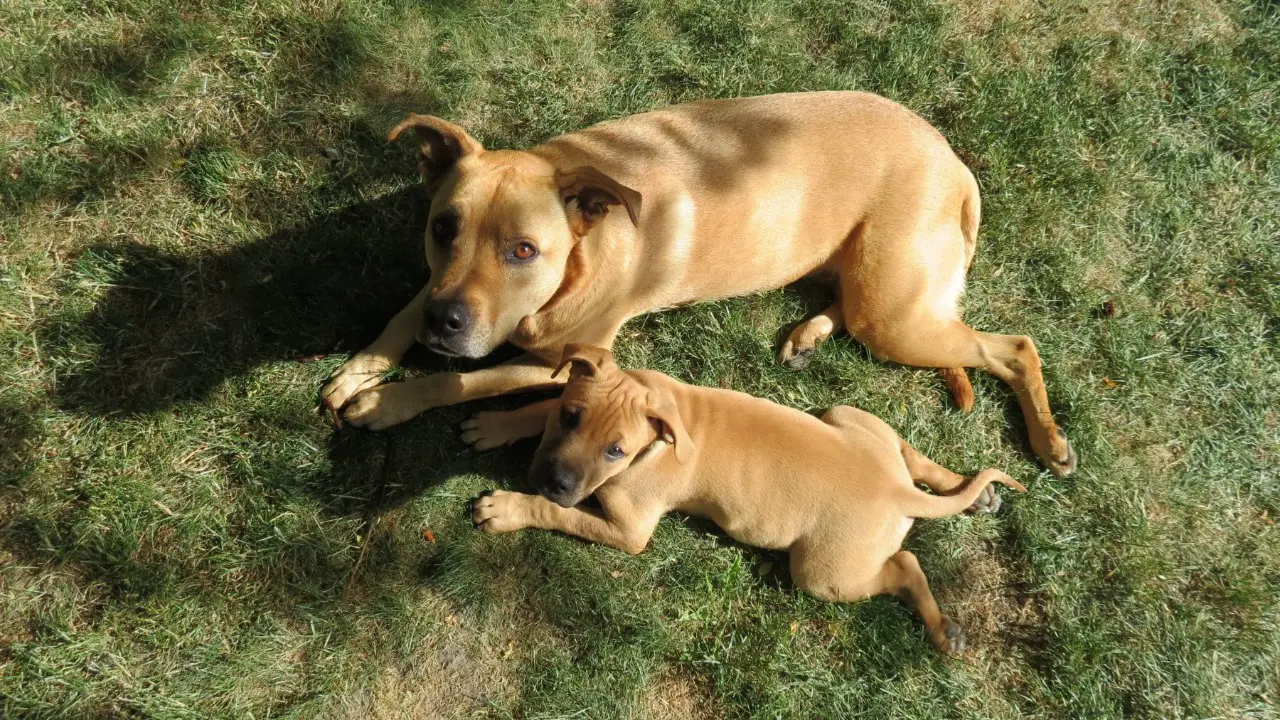
Introducing your new puppy to your older dog in an open place would be best. It can be ground or yard, or even your neighbouring area. You can not let your dog feel that he/she is in threat or fear. You must make your dog feel welcome and safe with the new puppy. So, overall, try to take every action to make your dog feel the least aggressive when they see the new puppy become friends with them.
2.Show Your Excitement Or Positive Emotions
When introducing a new puppy to your older dog, showing your excitement or positive emotions is important. Human emotions highly influence dogs, so if you display fear or anxiety, your older dog may pick up on these negative emotions and become wary of the new puppy.
Instead, approach the introduction with enthusiasm and positivity. Show your older dog that the new puppy is a source of joy and excitement by using an upbeat tone of voice, offering treats and praise when interacting positively with the puppy, and engaging in fun activities together as a pack. By showing your older dog that the new puppy brings positive experiences, you can help them accept and even embrace their new furry family.
3.Parallel Walking
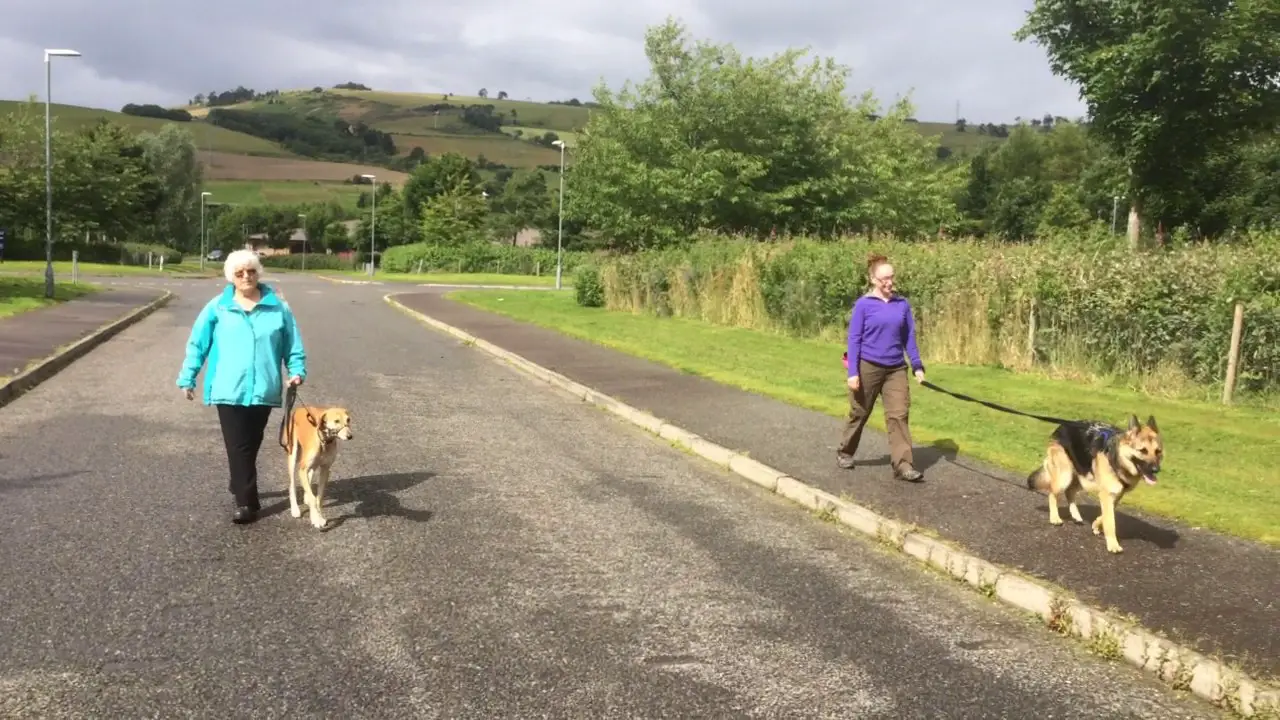
Parallel walking can be a helpful technique to help your older dog accept a new puppy. This involves taking both dogs for a walk together, side by side while keeping them on separate leashes. This allows them to become familiar with each other’s presence and scent in a neutral environment. Start with short walks and gradually increase the duration over time. It is important to ensure both dogs are calm and comfortable during the walks, so be prepared to stop or change direct interaction if necessary.
4.Make Them Play Together For Hours
If your older dog doesn’t behave aggressively in the first meeting, you can make them play together. Playing together in a new environment will help them make friendships. Also, it will make them both feel invulnerable to each other.
So, if you bring a new puppy home with old dogs, you need some planning and preparation. First, introduce your older dogs to the new puppy slowly. You have to hang out and play outside with both the older dog and the new puppy. Then, you have to avoid sources of conflict, such as food and toys. Lastly, it is more important to make sure that the older dog should get lots of attention than a new puppy.
How To Introduce A New Puppy To An Older Dog
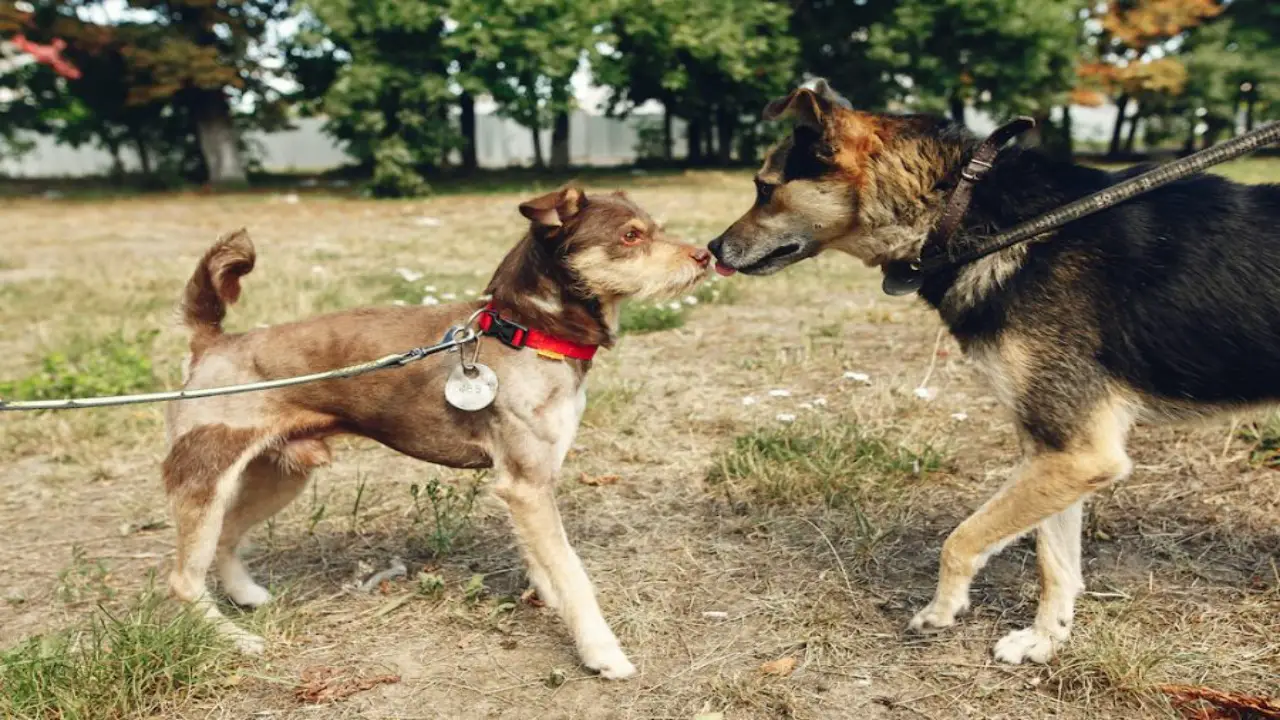
It can be helpful when introducing two dogs of different ages if the adult in charge decides which dog gets priority. Letting your older pet choose what they want can help make this idea stick better than prompting either of them into action.
- Bring your new pup into the house and let him explore for a while. Let the older pup’s reaction be natural, but don’t leave them together unsupervised at any point.
- Allow them to sniff each other and spend dog time together, but never leave them alone unsupervised until they seem relaxed.
- Always take the older pup’s lead if left alone because they could become frightened.
- If the older pup takes a liking to your new pup, and it seems they accept them, you have successfully introduced your new canine friend.
Introducing New Puppies To Homes With Senior Dogs
It’s well-known that senior dogs can have problems adjusting to their new home, but it doesn’t have to be this way. Here are some tips for introducing new puppies into homes with older dogs. Here are some tips for introducing a new dog to an older dog:
- Reading your dog’s body language
- Dealing with resource guarding by senior dogs
- How to keep a resource-guarding dog away from your belongings
- Dealing with resource guarding by pups
- Dealing with the fearful Senior dog
- Dealing with fearful pups
How To Train Your Older Dog To Accept A Puppy
Some common ways to help your older dog accept a new puppy. If you want your older dog and your new puppy to coexist, it is important to let them work out their differences independently and be patient while they adjust to one another.
Although they may not be able to show affection towards one another immediately, all dogs can eventually get along if you give them time and proper guidance. Ensure the older dog has a designated space within the house, such as a room or outdoor area. Avoid making physical contact with the older dog for about 5 days after introducing the new dog.
Give them time to smell each other through gateways such as windows and entrances before trying to interact with them while they are together. The older dog may consider the puppy his space, so the puppy must learn to respect that space.
Can Older Dogs Get Depressed Because Of New Puppies?
Introducing a new puppy to an old dog is quite difficult. Some dogs welcome new puppies and get so happy. But many older dogs get upset, depressed, jealous, or even angry with a new puppy, a special treat if the older dog is the only dog in the household. They seem sad and have sad faces if you bring a new puppy home.
Moreover, they get very stressed when the owner cares for the new puppy. Sometimes, they can even stop eating their food. They growl, snap, and try to get rid of the new puppy. Therefore, they steal toys and food away from the new puppy, which can create a fight. A dog who is stressed or fearful can bite and injure a puppy. As some dogs are not so social animals, they fear new puppies.
Why Is The Older Dog Attacking The New Puppy?
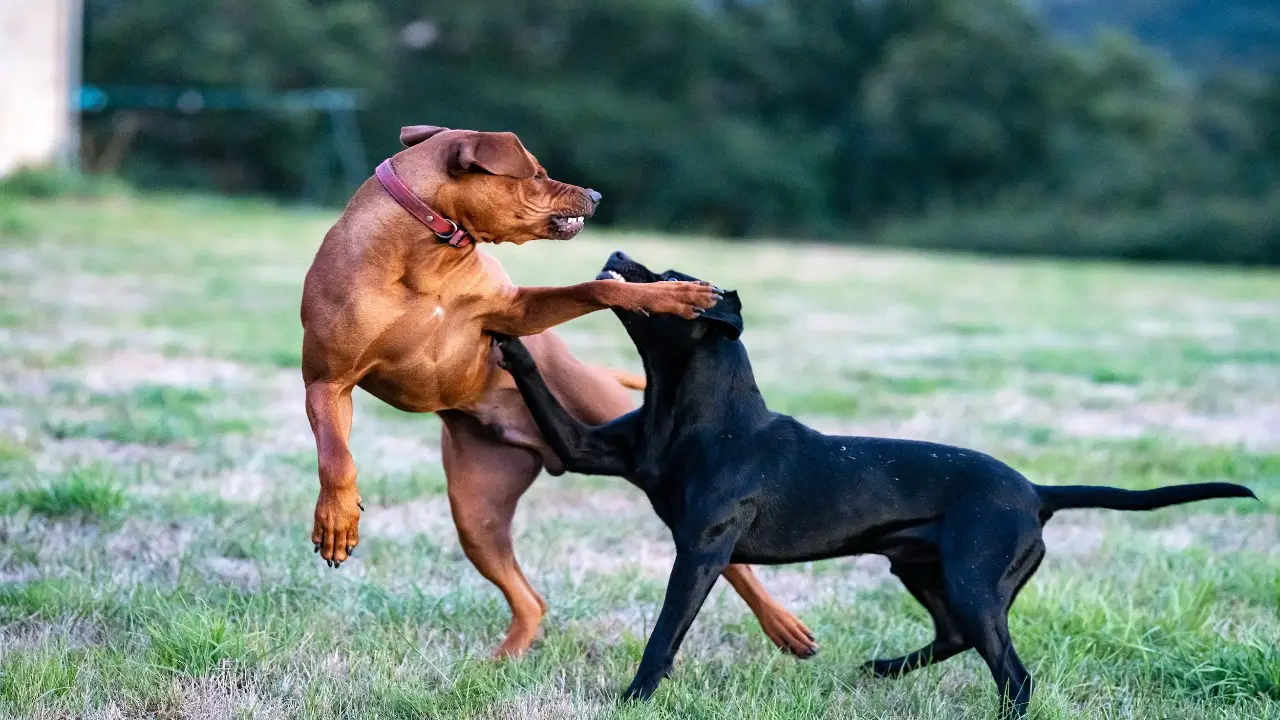
Introducing a new puppy with a household adult dog is difficult. Some dogs welcome new puppies with open paws. But the maximum time they growl, snap and try to escape the puppy potty break. Older dogs cannot adjust to the new puppy easily.
The dogs cannot tolerate the puppy when the owner loves and plays with them. As he/she cannot accept that another puppy will take his place, this leads to jealousy and aggression. And that might be why your older dog is attacking your old puppy.
Your dog can constantly take toys away from the new puppy. As some dogs fear new puppies, they attack them. Also, a dog who is stressed or fearful can bite and injure a new puppy. But you can avoid this if you prepare before bringing a new puppy.
To prevent your older dog from attacking your new puppy, take your dog and puppy to an enclosed neutral location territory area with plenty of supervision. You have to hang out with them and play outside together for the first couple of days. If your dog becomes stressed and unhappy, then stop the session. Finally, you have to remove sources of conflict, such as food or toys.
How Long Does It Take For A Dog To Get Used To A New Puppy?
Dogs are known as best friends of the human family because of their emotions towards us. Dogs also have emotions, just like humans do. When they see a new puppy around them having his master’s affection, love, and compassion, it is obvious that the dog feels unwanted behavior, thus creating a sense of jealousy.
Owners and caretakers should be careful about approaching the dog to create a better understanding and communication skills between the dog and the puppy. Things might not work out instantly, but in most cases, the dog and puppies are seen to build a bond of love, compassion, trust, and friendship within 3-4 weeks of togetherness.
Puppies can be exhausting at times as they are at their blooming stage and can cause a complete nuisance in the house. During such times, the caretaker should try to intervene and build up, making the puppy learn his way from the older dog. In this way, the older dog will feel a responsibility towards his master and the puppy.
More ways of building friendship include taking them for a walk together, showing more importance to the older dog, and at the same time showing affection towards the puppy, making them separate beds, food bowls, clothes, etc.
How To Make An Older Dog And Puppy Interaction Better?
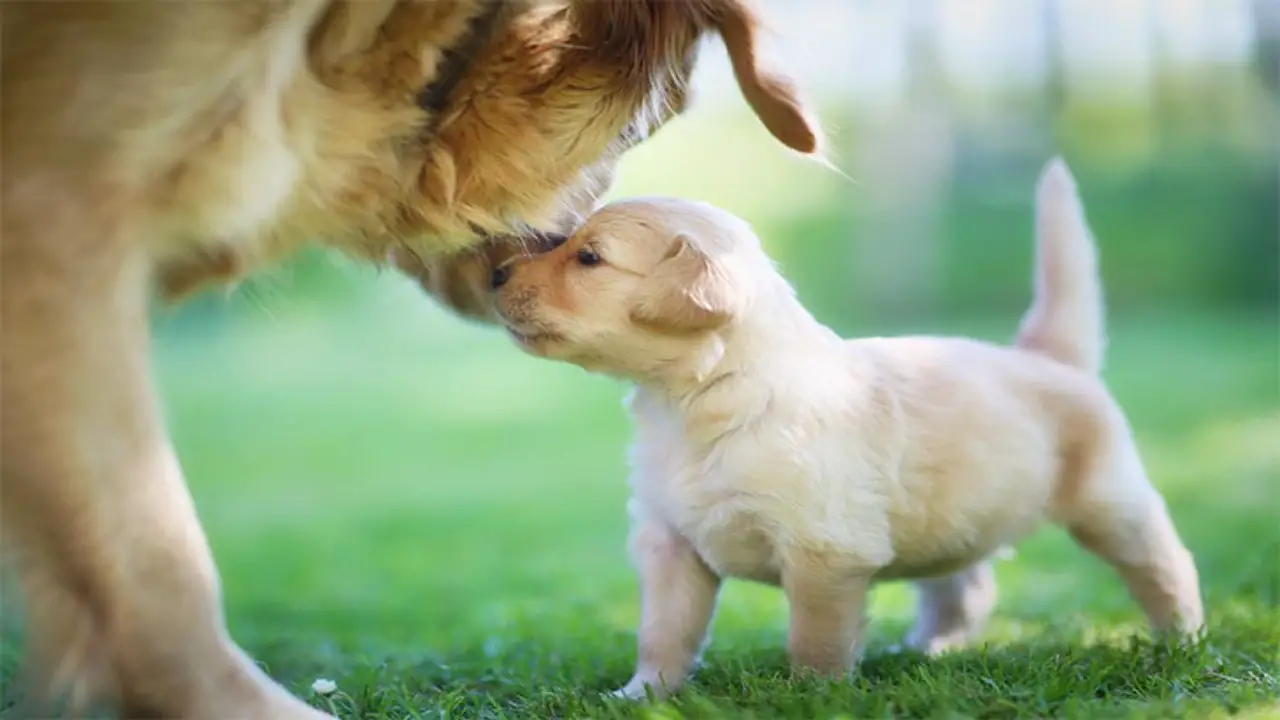
There are many ways how to make their interaction better and more fruitful. It is obvious for now that how the older dog and puppy interact and approach each other solely depends on how their master or caretaker has or wants to train them. Over time, the master should teach them specific mannerisms and behavior, which will help them grow compassion.
Such Mannerism Includes
- Playing games with both at the same time.
- Feeding them with food at the same time but at different bowls to avoid fights and aggression.
- Going for walks together and walking parallel with both.
- As the puppy is in his blooming stage, he should be trained to have similar likes and interests the same as the older dog.
- Cuddling them together.
- Teach the older dog not to bark or growl at the puppy.
The process can be exhausting for the master himself, but from time to time, it surely works out either way. You will soon see the older dog behave more politely and respectfully.
How Can I Know That My Puppy Is Bonding With The Older Dog?
Knowing that your new puppy is bonding with your older dog is an important step in helping them develop a positive relationship. Remember that building a bond takes time and patience. It is important to provide plenty of positive reinforcement and rewards when you see them interacting positively.
Additionally, always supervise their interactions and intervene if any aggressive behavior issues occur to ensure the safety of both professional dog trainers. There are several signs to look for that can indicate that they are starting to bond:
- Playfulness: If you notice that your older dog and the puppy are engaging in play, it is a good sign that they are starting to build a bond. This can include chasing each other, wrestling, or playing with toys together.
- Body Language: Pay attention to their body language when they are together. If they are relaxed, wagging their tails, and have loose body postures, it suggests that they are comfortable in each other’s presence.
- Mutual Grooming: Dogs often groom each other as a way of bonding. If you see your older dog and the puppy licking each other or grooming each other’s ears, it is a positive reinforcement sign that they are forming a connection.
- Sharing Resources: When dogs start to bond, they may begin to share toys, beds, or food bowls. If you notice them willingly sharing these resources without any signs of aggression or possessiveness, it indicates that they are becoming more comfortable with each other.
A Few Ways To Know If Your Puppy Is Bonding Well With The Older Dog Are
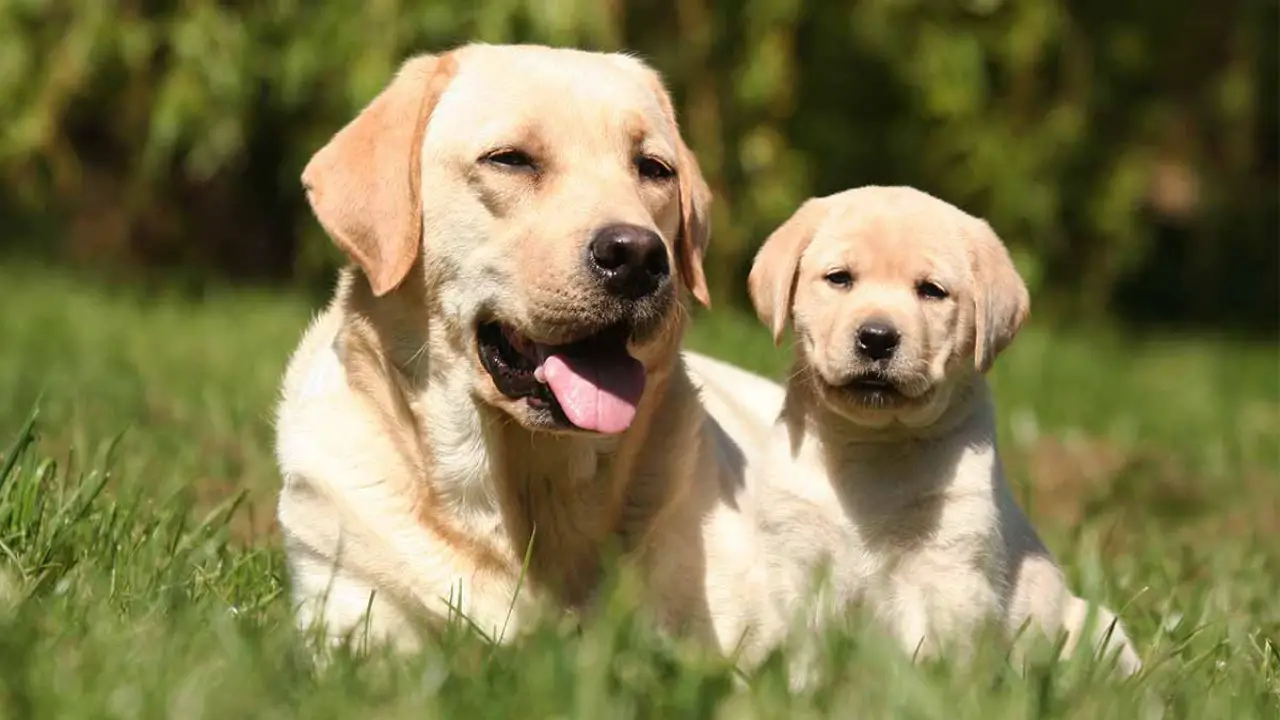
- If they are lying together
- Sharing foods.
- Running to him now and then.
- Walking together.
- Following each other.
- Cuddling or sleeping together.
- Barking along with each other.
- Doing things to get your older dog’s attention.
- Showing your old one respect.
It is not necessary to work out every time. Some puppies are shy and quiet, and hence for them, it takes longer than usual to bond with the older dogs. We should not force them up. Let their bonding happen naturally and slowly.
Conclusion
Introducing a new puppy to an older dog may take time and patience, but they can coexist peacefully. By following the tips and strategies discussed in this post, such as gradual introductions and positive reinforcement, you can help your older dog adjust to the new addition to the family.
If eventually, the situation gets better, try to create their bonding more strongly by some techniques. Moreover, you need to visit your dog’s vet if he doesn’t seem to cope well and shows signs of stress or depression. Another thing is, do not adore your new puppy more in front of your older dog. It will make your dog more jealous. Lastly, good luck with your dogs! I hope now you know how to get my older dog to accept the new puppy.
FAQ
[rank_math_rich_snippet id=”s-0640eef0-e55a-4d6f-a091-2f38092a23f7″]